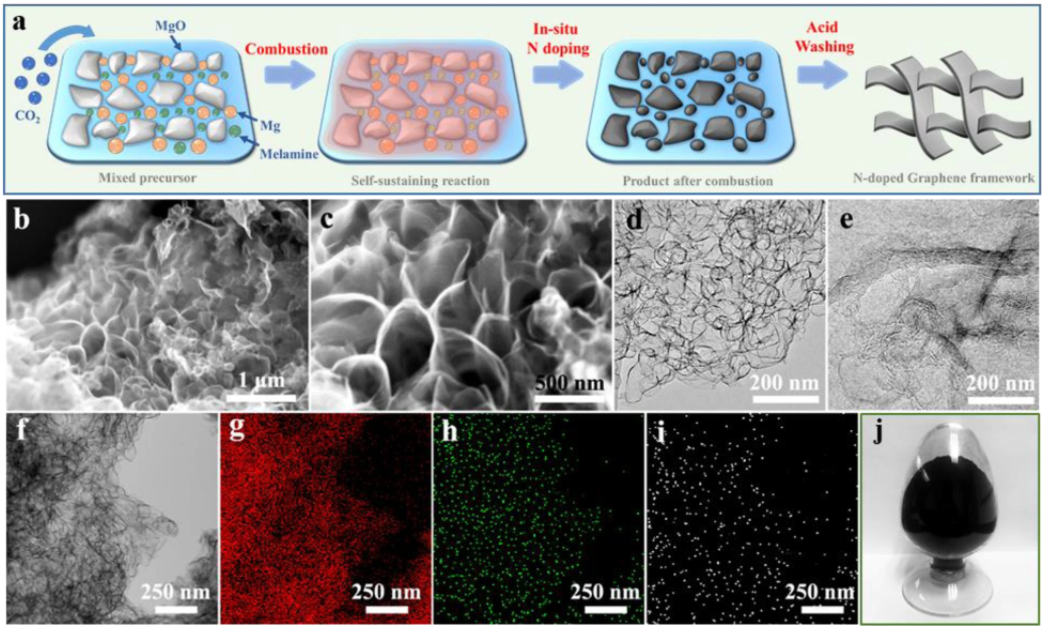C. Li, X. Zhang*, K. Wang, X.Z. Sun, Y.N. Xu, F.Y. Su, C.-M. Chen, F.Y. Liu, Z.-S. Wu, and Yanwei Ma*
NPG Asia Materials, 2021, 13, 59.
DOI: 10.1039/C9EE03219C [PDF]

Lithium-ion capacitors are envisaged as promising energy-storage devices to simultaneously achieve a large energy density and high-power output at quick charge and discharge rates. However, the mismatched kinetics between capacitive cathodes and faradaic anodes still hinder their practical application for high-power purposes. To tackle this problem, the electron and ion transport of both electrodes should be substantially improved by targeted structural design and controllable chemical doping. Herein, nitrogen-enriched graphene frameworks are prepared via a largescale and ultrafast magnesiothermic combustion synthesis using CO2 and melamine as precursors, which exhibit a crosslinked porous structure, abundant functional groups and high electrical conductivity (10524 S m−1 ). The material essentially delivers upgraded kinetics due to enhanced ion diffusion and electron transport. Excellent capacities of 1361 mA h g−1 and 827 mA h g−1 can be achieved at current densities of 0.1 A g−1 and 3 A g−1 , respectively, demonstrating its outstanding lithium storage performance at both low and high rates. Moreover, the lithium-ion capacitor based on these nitrogen-enriched graphene frameworks displays a high energy density of 151 Wh kg−1 , and still retains 86 Wh kg−1 even at an ultrahigh power output of 49 kW kg−1 . This study reveals an effective pathway to achieve synergistic kinetics in carbon electrode materials for achieving high-power lithium-ion capacitors.